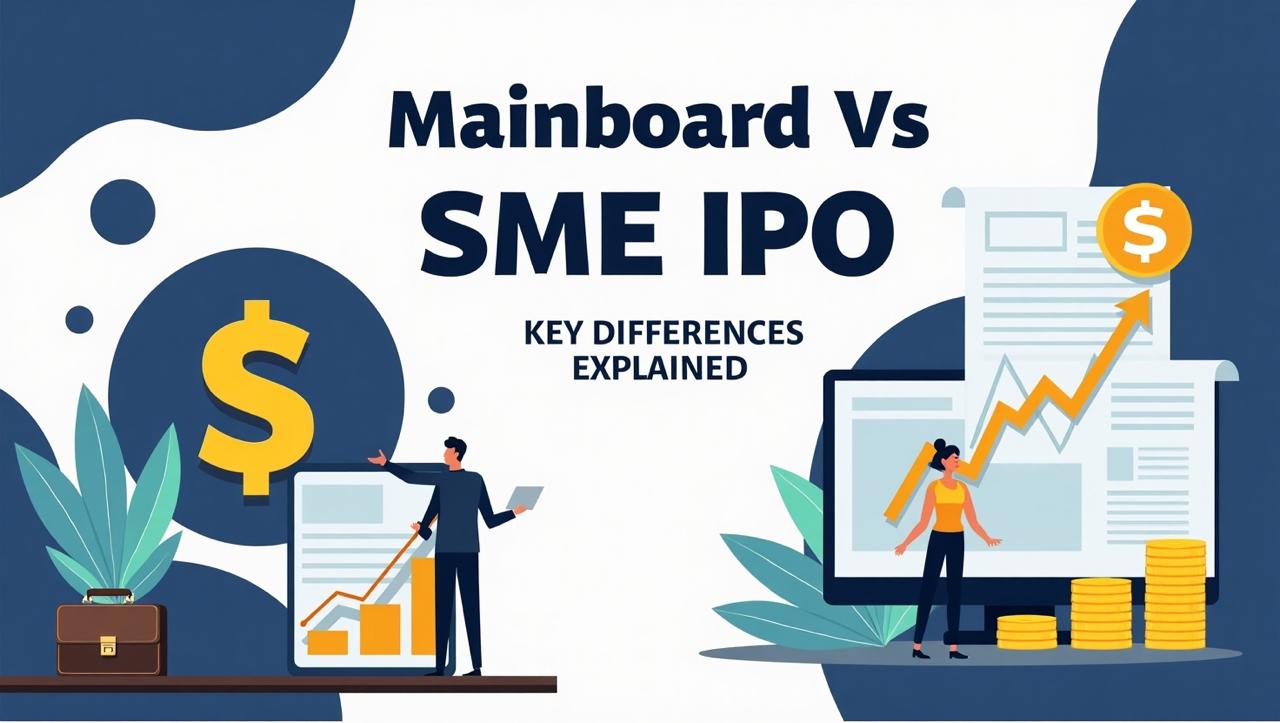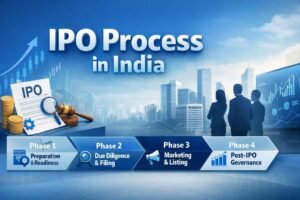
In today’s fast-paced financial world, IPOs (Initial Public Offerings) have become an essential route for businesses looking to raise capital and expand. However, the landscape of IPOs is not monolithic; there are different types of IPOs available depending on the size, and goals of the business. Two major types of IPOs are Mainboard IPOs and SME IPOs.
What is a Mainboard IPO?
A Mainboard IPO is aimed at larger companies that meet specific eligibility criteria set by SEBI and the respective stock exchanges (NSE and BSE). The companies opting for mainboard IPOs are typically large corporations with a higher market capitalization, often exceeding ₹500 crore.
What is an SME IPO?
SME IPOs are designed for small and medium enterprises that need funds to to scale but may not fulfill the strict regulatory requirements of a Mainboard listing. The SME platform on NSE (NSE Emerge) and BSE (BSE SME) allows these businesses to go public with relatively relaxed norms.
Now that we have a basic understanding of both types of IPOs, let’s dive into the difference between mainboard IPO and SME IPO across various dimensions:
Major Differences Between Mainboard IPO and SME IPO
| Factor | MainBoard IPO | SME IPO |
| Company Size | Large-scale companies | Small and medium scale enterprises |
| Stock Exchange | NSE and BSE | NSE Emerge & BSE SME |
| Minimum Post-issue Paid-up Capital | Rs. 10 Cr or above | Between Rs. 1 Cr – Rs. 10 Cr |
| IPO Size | Typically above Rs.25 Cr | Can be as low as Rs. 2-3 Cr |
| Underwriting | Optional | 100% Underwriting is mandatory, with merchant banker underwriting 15% |
| Market Making | Not Required | Mandatory for 3 years |
| Investor Eligibility | Widely participated by institutional, retail, and HNI investors | Mostly retail and HNI investors |
| Due Diligence | Comprehensive | Focused and streamlined |
| Minimum Application Size | As low as ₹10,000 to ₹15,000 for retail investors | Typically ₹1,00,000 or more due to larger lot sizes |
| Investor Requirement | Requires minimum 1,000 investors | Requires minimum 50 investors |
| Reporting Timelines | Financial reports must be presented every 3 months | Financial reports must be presented every 6 months |
Which IPO is the Right Option for Businesses?
For businesses, the choice between a Mainboard IPO and an SME IPO largely depends on their size, growth stage, and capital requirements.
- Mainboard IPO: This is typically the ideal choice for established, larger companies that are seeking to raise substantial capital for significant growth initiatives or expansion. A Mainboard IPO helps a company attract a broad investor base and ensures higher liquidity in the market. The listing process involves stringent vetting and due diligence to ensure the company meets all regulatory norms.
- SME IPO: Smaller companies and startups in their growth phase might consider an SME IPO as a viable option. While the capital raised is relatively smaller, an SME IPO offers flexibility and fewer regulatory requirements. Additionally, listing on an SME platform opens the door for companies to build their reputation, gain investor interest, and potentially scale their operations in the future.
Which IPO is the Right Option for Investors?
For investors, the choice between Mainboard and SME IPOs depends on their risk tolerance and investment goals.
- Mainboard IPO: Ideal for conservative investors looking for stability and lower risk.
- SME IPO: Suitable for investors with a higher risk appetite seeking higher returns from emerging businesses
Final Thoughts
In conclusion, understanding the difference between mainboard IPO and SME IPO is crucial for both businessmen looking to list their companies and investors seeking new opportunities. Mainboard IPOs are suited for large, well-established companies with a strong financial track record, while SME IPOs cater to smaller, high-growth companies looking to tap into capital markets with a lower entry barrier. Both platforms offer unique opportunities, but they come with their own set of challenges and benefits. By assessing your company’s profile or investment goals, you can make a more informed decision about which route to take.
Sources:
https://www.chittorgarh.com/book-chapter/sme-ipo-introduction/8/
https://www.indiainfoline.com/knowledge-center/ipo/difference-between-mainboard-ipo-sme-ipo






